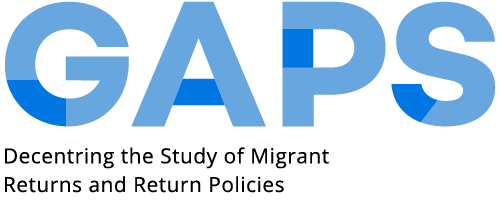Return Migration Infrastructures in Greece - WP3 Country Dossier
Executive Summary:
This Country Dossier focusing on Greece is part of Work Package 3 of the GAPs project and discusses how return migration governance is put into practice, through the concept of ‘Return Migration Infrastructures (RMIs)’. Greece has a long history of returns the implementation of which has taken different forms depending on the political and socioeconomic context. Forced returns and deportations have been in place since the migratory movements of the 1990s, the Assisted Voluntary Return and Reintegration (AVRR) program implemented by the International Organization for Migration (IOM) was launched in 2010, and land and sea pushbacks have seen an important increase since 2019-2020.
The Country Dossier provides an overview of the three RMIs in Greece (AVRR, forced removals, and pushbacks) and an extended focus on AVRR. The methods included i) desk research and the creation of three flow maps on the RMIs in Greece; ii) the implementation of sixteen semi-structured interviews with stakeholders related both to AVRR and to other RMIs in Greece; and iii) the ethnographic tools of field visits, guided tours and observation at the IOM headquarters in Athens, the Open Centre for migrants registered for AVRR (OCAVRR), and the Athens International Airport during a departure of Georgian AVRR returnees.
The analysis unfolds the everyday modes of implementation of the RMIs and particularly the AVRR program in Greece by discussing the actors involved, their practices/‘doings’, the materials and technologies used, the relationships between the above, and several ‘gaps’ or other challenging issues. A wide network of involved actors emerges operating across multiple scales, such as those either facilitating or contesting returns, others maintaining a dual role, actors with an entrepreneurial approach to the returns’ operation, and non-state and private actors. Moreover, as the analysis indicates, the implementation of returns is inherently non-linear. AVRR implementation comprises, on one hand, a seemingly standardised and uniform procedure for all, while, on the other, a ‘case-by-case’ and individualised framework. This results in different –and usually unequal– overall return experiences for immigrants, depending on their legal status, possession of identification and travel documents, vulnerabilities, entry points to the program, places of stay while awaiting return, and varying types of encounters with relevant authorities. Crucially, registration and participation in AVRR do not preclude the possibility of arrest and detention of migrants, even though they may possess documents that prove their enrolment in the program. Thus, as part of the different procedural steps, detention, the threat of detention, and processes of irregularisation remain fundamental components of the implementation of all RMIs and AVRR in particular, while implementing AVRR for detainees directly challenges its voluntary character. The latter is also questioned when the broader context in which AVRR operates in Greece is taken into account, highlighting that voluntary and forced returns should be understood as a continuum rather than a dichotomy, directly linked to multiplicity and non-linearity of migration trajectories. Funding, materials, geography, and technologies play a crucial role in shaping AVRR revealing its evolving and subject to change and expansion nature. The Country Dossier finally argues that a simultaneously organised and solid structure and a capacity for dynamic adaptation become evident in all RMIs, especially AVRR.
Please find the entire DOI report by clicking the button below:

